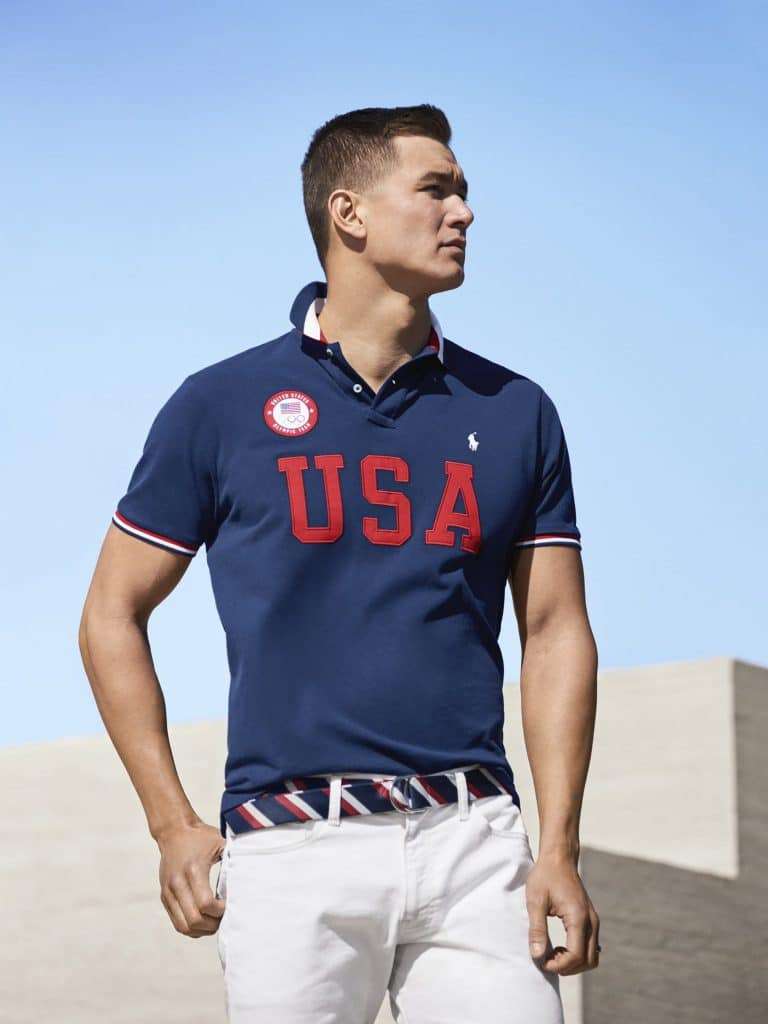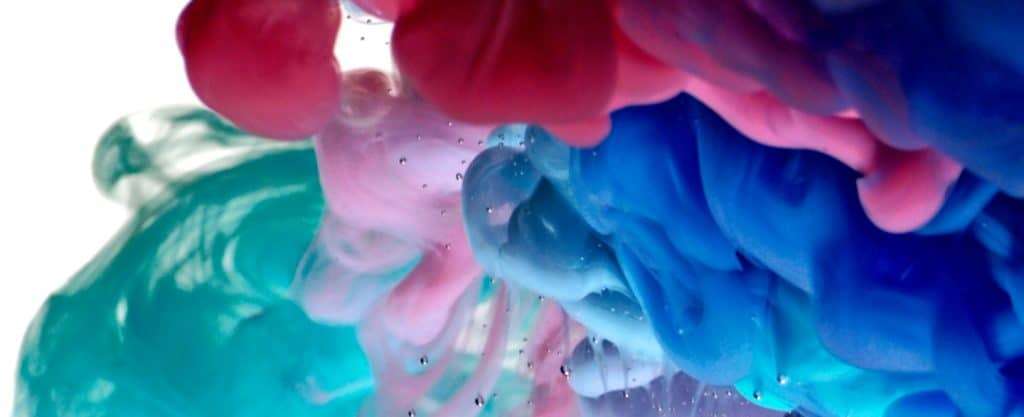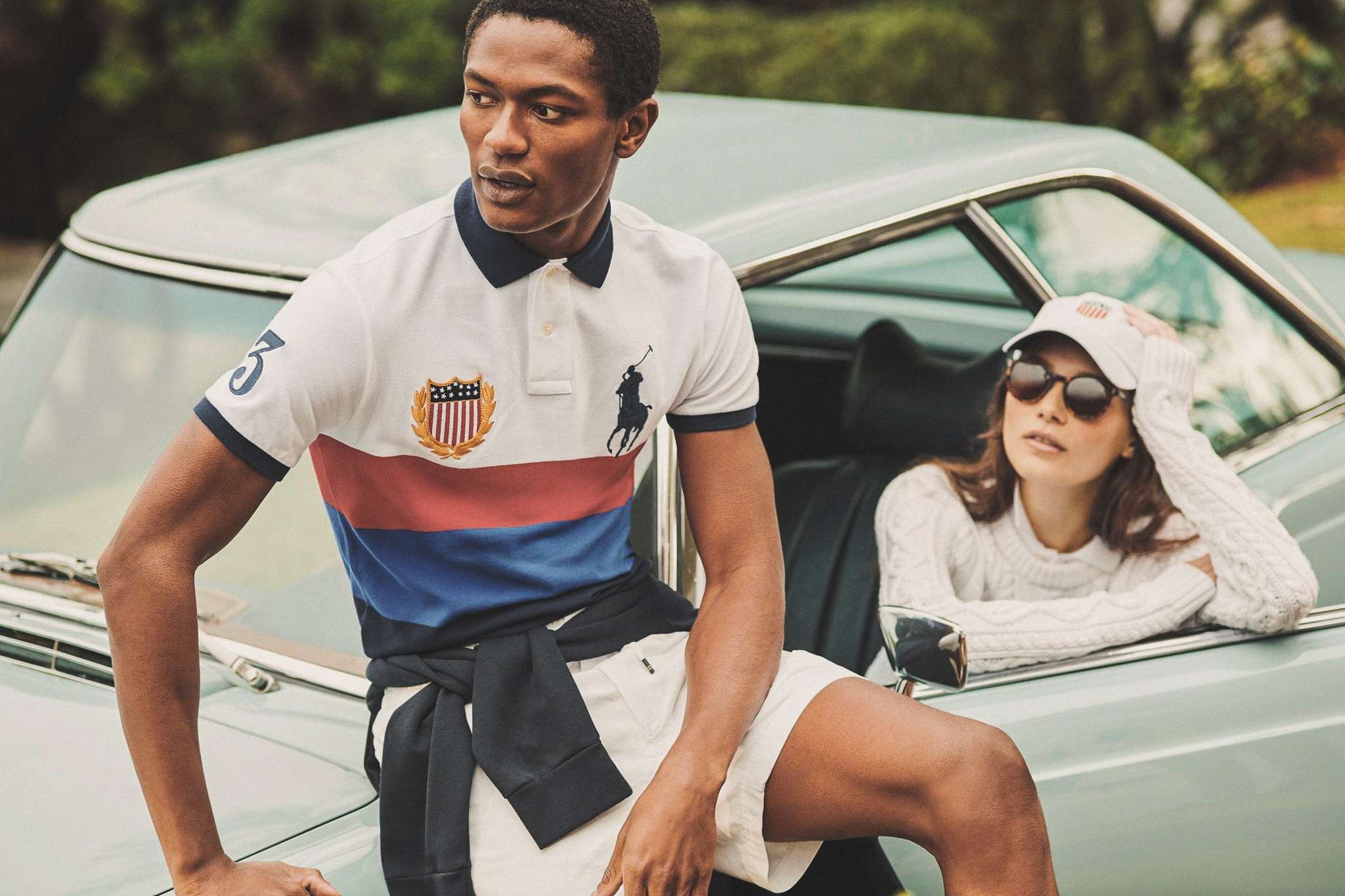Ralph Lauren customers may soon be helping to produce their own polo shirts in-store, as part of the brand’s efforts to become more sustainable.
As early as next year, Ralph Lauren’s Manhattan flagship store may let customers use its newest technology, Color on Demand, to dye their shirts in the store, the brand says.
Color on Demand is a novel, scalable zero wastewater cotton dyeing system developed by the American fashion brand. According to Ralph Lauren, fabric dyeing produces 20 percent of the world’s wastewater and uses trillions of liters of water in production.
The label has been working with chemicals giant Dow on the new, lower impact cotton dyeing. It reduces chemicals and water use as well as energy.
“Ralph Lauren obviously is a big user of cotton and to dye textiles, it takes a lot of chemicals and a lot of water and you generate a lot of waste and mainly you do that because you’re trying to use heat and pressure to put that dye into the fabric,” Dow CEO Jim Fitterling said last Thursday at the CNBC ESG Impact summit.
Ralph Lauren first announced the technology earlier this year. It says it is aiming for 80 percent of its solid cotton dyed offerings to be made with the Color on Demand process by 2025.
“Traditional color dyeing is one of the most polluting practices in our industry and as a global brand, we recognized the need to create a scalable solution,” Halide Alagöz, chief product and sustainability officer at Ralph Lauren told WWD in March. “Color on Demand significantly reduces the environmental impact of dyeing cotton, and as an added benefit, will enable us to better balance inventory and meet personalized consumer demands faster than ever before.”
Color on Demand
The Color on Demand system allows for recycling and reusing water from the dyeing process, Alagöz says. This is critical in addressing the world’s water scarcity and pollution resulting from cotton dyeing.
Dow developed a technology called ECOFAST Pure, which requires as much as 90 percent fewer chemicals, 50 percent less energy, and 50 percent less water than traditional textile dyeing.
“In the first phase of Color on Demand, Lauren optimized the use of EcoFast Pure Sustainable Textile Treatment, a pre-treatment solution developed by Dow for cotton textiles,” WWD explains. “When used with existing dyeing equipment, EcoFast Pure enables the use of up to 40 percent less water, 85 percent fewer chemicals, 90 percent less energy and a 60 percent reduction in carbon footprint compared to traditional cotton dyeing processes.”

Ralph Lauren is aiming to distribute the technology industry-wide to help reduce the number of chemicals used in cotton dyeing. It’s also a more efficient and sustainable way to color cotton, the brand says. Color on Demand moves the dyeing process option to any point in product manufacturing instead of at the beginning of the production cycle. This, Ralph Lauren says, will also decrease production lead times.
Bringing the technology to stores could offer the label a retail boost post-pandemic in an “experiential retail” event, with a sustainability incentive and a personalized product.
“Ralph Lauren will be able to do something like put Color on Demand in one of their flagship stores in New York next year so that you can go in and get your Ralph Lauren polo dyed in the store,” Fitterling said at the CNBC ESG Impact event. “That would have never been possible without this technology.”
In-store dyeing
Ralph Lauren customers will be able to pick colors from a palette in the store, but they may even be able to bring in a color example and match it, if they prefer. Software will match the dyes to the targeted color.
“Now designers are choosing a palette that will appear in a store six to nine months from now, summer 2022, and trying to predict consumer trends,” Ken Butts, global key account manager at Datacolor, which works with retailers on similar offerings, told CNBC. “If retailers get the trend wrong, that may result in a rush process of new manufacturing and transport which has high costs and by the time they get the new units they may still miss trend. “With this, you can respond to current hot trends,” he said.

On-demand dyeing reduces the need for big production runs. This saves the label initial costs, and it also helps to reduce overstock issues—a problem that leads to surplus products often sold for a loss, or, as in the past, sent to landfills.
“Anywhere in the world you find a factory dyeing fabrics on large-scale equipment, thousands of pounds at a time, they will have a similar piece in the lab on a small scale and that’s where the manufacturer is testing their ability to make a specific color,” Butts said. “The first step for a supplier when a retailer asks for a new color is to test it on smaller equipment.”
The consumer-involved process also makes them more aware of the steps and processes involved in their fashion choices, which could help to make them more conscientious and sustainable shoppers.
“Dying fabrics to customer preferences is really exciting,” Butts said.
Ralph Lauren’s sustainability commitments
Ralph Lauren’s announcement comes after the fashion giant partnered with the World Wildlife Foundation last summer as part of its efforts to reduce water use by 20 percent by 2025. Ralph Lauren is also working to completely eliminate hazardous textile chemicals by 2025.
Color on Demand is part of Ralph Lauren’s broader sustainability goals, including limiting emissions as part of Paris Agreement targets. A member of the G7 Fashion Pact, Ralph Lauren is also working to restore biodiversity and protect the world’s oceans.



